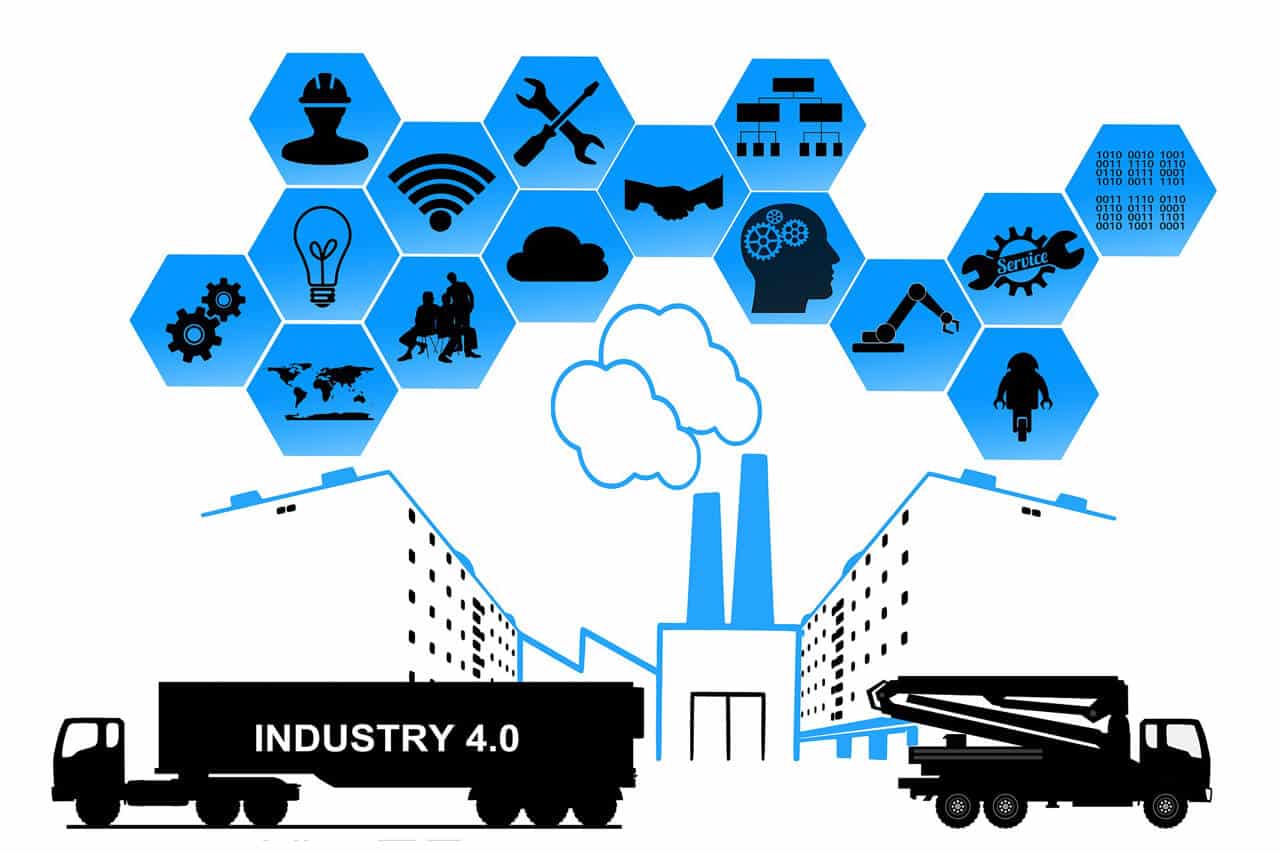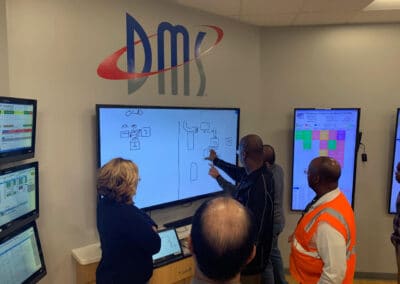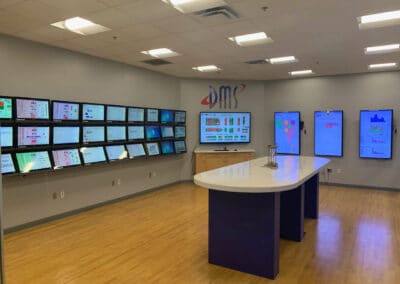The Social Media team recently sat down with Bill McGuire, Smart Manufacturing Director at DMS to learn more about Industry 4.0, and how it is changing both DMS and industry as a whole.
The Fourth Industrial Revolution
Before we get into the details, let’s quickly and roughly define the four levels of the “Industrial revolution.” Each level has been a significant transformation on how companies manufacture products:
Industry 1.0 is based on mechanized production (it began with the steam engine). This is where mechanical power is utilized to help speed up production.
Industry 2.0 is mass production. It involves assembly lines and electricity.
Industry 3.0 involves computing and automation.
Industry 4.0 improves on 3.0 by connecting machines to a cyber-physical system. Machines store and access huge amounts of data in the ‘cloud’ while using that information to interact with each other, and ultimately, to make decisions independent of people. The machines will learn what works best, versus what doesn’t work, and this will result in far more efficient factories which generate less waste.
In other words, with Industry 4.0, manufacturing is about to get a lot faster, leaner, and smarter.
So where is DMS at currently?
“We are at about Industry 2.5; we are in the process of investing fairly heavily in automation right now,” According to Bill.
Will Industry 4.0 eliminate jobs?
Every Industrial Revolution eliminates jobs—but it also creates new ones as well. Machines simply improve the speed and efficiency of the manufacturing process while quite often making production safer. As machines replace workers for repetitive and strenuous tasks, workers are retrained and gain skills to work with, assist, and maintain the machines. With each revolution, the workforce gains new skills, and takes on new roles to support the change.
“In the 80’s, when the robots started to get introduced into the plants, it actually created a lot of new opportunities. The spot-welder jobs might have gone away, but the technicians, the controls engineers, the service-in-the-field jobs were created,” Bill mentioned. He also admitted that he doesn’t know all of the different types of jobs which will be created, but the workforce is changing fairly rapidly, and new opportunities are appearing all of the time.
One thing is clear, in order to maintain the big data centers required in Industry 4.0, and to keep the automated systems and processes working efficiently and correctly, there will need to be highly skilled technical people working throughout the process.
Another thing to consider is that as companies get faster at manufacturing products, they will require their material and part suppliers to be located closer to the manufacturing centers so that shipping time, costs, and delays will be reduced—at least when it comes to larger components which are expensive to ship. This means new factories are, and will continue to be built close to manufacturing centers as Industry 4.0 continues to become adopted throughout industry.
How far away is Industry 4.0?
It’s happening now. The scale and impact of this revolution may only be completely clear in hindsight, but manufacturers around the world are introducing smarter systems and robots to make their operations more efficient all the time. Amazon, for example, uses robots in their warehouses to make their floor space more efficient and to reduce costs. 3D printing, which was only a short time ago an expensive prototyping solution, is now far more cost-effective, and is being utilized for production. Robots which used to be large and expensive investments are now much smaller and able to handle a variety of tasks, including working with humans on a production line.
What are some examples of Industry 4.0 at DMS?
Our “Top 5” room and scoreboards allow us to see information in real time, and make changes quickly to solve problems. This is one example of how all of this works.
Come join the fun & follow our official Social Media Channels:
- LinkedIn: Detroit Manufacturing Systems, LLC.
- Facebook: Detroit Manufacturing Systems
- Twitter: DMS_NA
- Instagram: DMS_Detroit2012
- YouTube: DMS


